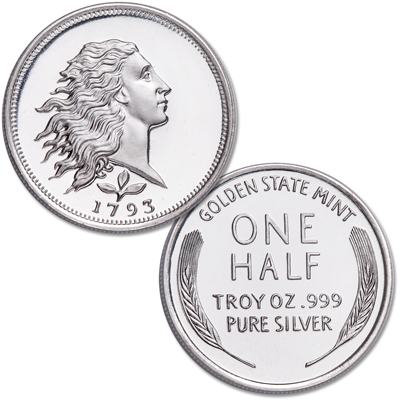Celebrating U.S. Cents!
More than a pretty profile
Large, small, historic or modern, the ubiquitous cent has – like a model on a fashion runway – gone through eight obverse designs during its existence as the country’s longest-running coin.
The very first design occurred in 1793 on a large one cent piece. These copper coins were about the size of the half dollars we have today, weighed 11 grams, and only 11,178 were struck by hand at the U.S. Mint in Philadelphia. Heavy to carry around as pocket change, but in 1793, six cents could buy you a pound of brown soap, seven pounds of starch, and nine refined tallow.
President George Washington declined to be depicted on any coin, so the mint chose America’s symbol of freedom for the obverse, Liberty. With a profile that might call to mind Chicago’s nickname of the Windy City due to her blowing hair, this large one-cent coin’s design earned the nickname Flowing Hair.
The design also brought some public objection. Before the year was out, a second new design – that echoed many of our Founding Fathers’ interest with Greco-Roman forms of government – debuted showing Liberty with a Phrygian cap of freedom on a pole next to her profile.
In 1796, Liberty’s profile on the one cent increased to include fabric and the resulting make-over gave birth to a new nickname, the Draped Bust Design. Ribbons tied back some of her hair in this third obverse design.
New Century, New Designs
Twelve years later Liberty received a new hair style for obverse design number four. It included curly locks framing her neck. A headband gave her wavy tresses volume and height. The word “Liberty” was strategically moved to the headband. This large cent went into circulation in 1808.
Enter the War of 1812 – when Great Britain imposed economic restrictions on the young United States as it sought to expand its trading territories. The war lasted until February 1815, causing a shortage of imported copper. No cents were issued that year. However, public sentiment for a new look for Liberty was brewing.

So it was in 1816 the headband was changed to look more like a coronet for design number five. The resulting nickname for this large cent was Liberty Head. With various tweaks to her hair and profile – resulting in varieties with fun nicknames such as Silly Head and Booby Head – this crown design lasted for 41 years.
But that design reign was going to end. Copper prices were climbing, and more consumers were becoming vocal about wanting a lighter-weight cent.
On February 21, 1857, Congress passed legislation to change the cent’s size and metal content. The result was a weight change to 4.67 grams (down from 11), and a composition that was 88% copper and 12% nickel. Congress also agreed to obverse design number six!
Small is Beautiful

Our national symbol, the majestic bald eagle in flight, graced the obverse of the new, smaller cent. Issued for just two short years from 1856 to 1858, this coveted 1856 Flying Eagle, offered by Littleton Coin Company, shows a coin with nicely defined details and in Proof condition. Those with an “eagle” eye can spot the lettering difference in the word “America” on this three piece set of cents struck in 1857 and 1858.

By the mid-19th century, our country’s political leaders were moving away from the Greco-Roman ideals of government that had influenced our Founding Fathers. Interest, too, was shifting about what our currency’s national symbols could look like.
In 1859, the mint unveiled obverse design number seven – a profile of Liberty wearing a Native American headdress on the now smaller one-cent coin. For the next 50 years, this design remained a constant on the cent’s obverse.
From Liberty to Lincoln
Then in 1909 a historic change took place. The U.S. Mint chose a U.S. president to profile a coin for the first time! It chose our revered 16th president, Abraham Lincoln, and this history-worthy change to the obverse became design number eight.
The design choice commemorated the 100th anniversary of President Abraham Lincoln’s birth on February 2, 1809. But this new profile wasn’t the only change to the one cent’s obverse design. The words in god we trust were finally added to the “head” of the one-cent – 48 years after Lincoln’s Treasury Secretary, Salmon P. Chase, made the initial suggestion.

Even as the mint was striking this new Lincoln Head cent, it was still issuing the Indian Head cent. Collecting the two different obverses became popular.
Assembling a collection that spans over 100 years can be the hobby of a lifetime. Littleton Coin Company offers collectors at least two different opportunities to appreciate this hard-working coin that bears the first profile of a U.S. president.
We have the Lincoln Cent Collectors Club. We also have the Lincoln Memorial Proof Collection Club that celebrates the design changes to the cent’s reverse that will never be minted again.
Want to make more sense of the all-purpose cent? At our Learn Center we have an entire page devoted to cents history where you can make many other delightful discoveries!




